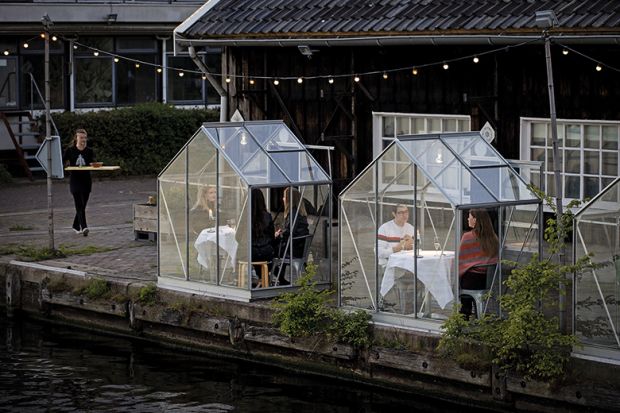Continental European universities have been largely spared budget cuts and redundancies amid the fallout of the coronavirus pandemic, in what some see as a quiet vindication of a financial model that avoids reliance on student tuition fees and endowment income.
There are no reported redundancies planned in Germany, unions say, while Dutch academics have been awarded a 3 per cent pay rise, higher than last year, in recognition of the upheaval caused by the switch to online teaching.
This contrasts with the US, the UK and Australia, where some universities face catastrophic losses of income and layoffs because of the shutdown of the lucrative international student business and the stock market collapse.
“As business institutions, they are…strong if the market is strong, and weak if the market is weak,” said Peter-André Alt, president of the German Rectors’ Conference.
German universities do not charge tuition fees, even to international students, reflecting a desire to attract workers, to build soft power and to assuage an anti-fees political sentiment. The exception is the southern state of Baden-Württemberg, which charges €1,500 (£1,348) per semester to students from outside the European Union.
Institutions might suffer a small hit to their budgets if overall student numbers decline, because of how state funding formulas work, “but not a financial impact that would mean you have to change your plans”, explained Frank Ziegele, director of Germany’s Centre for Higher Education.
In the wake of the pandemic’s devastating impact on global student flows, German advocates of fee-free higher education felt “confirmed” in their eschewal of this income stream, he added.
Dutch universities have edged towards the UK-US university model, attracting an increasing number of international students by offering a growing range of English-language courses.
But compared with the UK, dependence remains limited. Dutch universities do charge students from outside the European Economic Area (EEA), and Switzerland charges up to €15,000 a year at bachelor’s level; but so far, these fee-paying students constitute just three out of every 100. In the UK, by contrast, 14 of every 100 are higher-paying students from outside Europe.
So far, campaigners against staff cuts are not aware of any redundancies in the Netherlands because of the pandemic. “It will not have a direct effect on higher education funding in the short and medium term,” said Marijtje Jongsma, an associate professor at Radboud University and a member of the campaigning group WOinactie. “But if student numbers drop, it will have consequences on staff.”
On 11 May, Dutch universities and unions agreed a 3 per cent pay rise for employees, an increase on last year’s 2 per cent. Universities and unions said the pay rise expressed “appreciation for the efforts and commitment of our employees” during the pandemic.
Meanwhile, in France, universities host close to 350,000 international students, and in 2018 the government launched a drive to attract half a million by 2027.
However, fees are minimal for students from the EEA, and although non-European students normally pay €2,770 a year for a bachelor’s course, there are numerous waivers.
“France has not and will not be as radically hit as the UK, the US and Australia, where in recent decades we have witnessed an aggressive marketing logic based on fee-paying international students,” said Juliette Torabian, an international higher education expert.
The country “still benefits from an established public good approach to universities”, although since 2007 “the system has also been steered towards fee payment and performance funding”, she said.
France’s target to attract half a million students by 2027 still stands, according to Florent Bonaventure, director of communications at Campus France, which promotes international mobility, although he described the aim as “voluntary”.
“French universities’ business model is not dependent on international students – they will not be financially hit by the crisis, and we see a renewed desire of mobility coming from international students [interested in] coming to France,” he added.
But although continental European universities appear to have been spared an immediate hit, there are fears that the huge debts taken on by states to weather the pandemic could lead to funding cutbacks in the medium term.
“In the end, there will be downgraded public investment in higher education and culture,” predicted Professor Alt.
Professor Jongsma agreed. Ultimately, “less students will mean less budget”, she said.
And even without making redundancies, nervous universities might choose not to renew short-term contracts.
“About 40 per cent of our academic staff are on temporary contracts,” she warned. “I fear this group is most at risk. This might have pretty negative consequences for early career scientists, who are already struggling.”
This is of particular concern in Germany, where temporarily employed lecturers far outnumber secure professors, said Andreas Keller, deputy chairman of Germany’s education and science union, GEW.
“The golden time of steady increases in higher education funds is over,” said Professor Ziegele, who added that universities would be more “careful” about converting temporary contracts into permanent ones.
Relying heavily on public funding presents its own risk, he argued. “You’re always vulnerable if your funding depends too much on one source, no matter what it is.”




